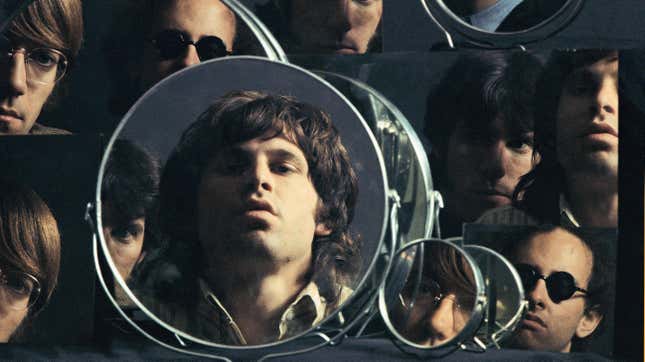
Jim Morrison would’ve turned 80 years old on December 8, 2023, a feat that may seem like an impossibility from our modern perspective when he’s been a dead legend for far longer than he was a living star. Morrison spent roughly five years in the glare of the spotlight: his band, the Doors, released their debut album at the start of 1967 and L.A. Woman, their final album with the singer, arrived just months before his premature death at the age of 27 in July 1971.
In the decades since his death, the Doors have been celebrated and ridiculed. After experiencing considerable revivals in the 1980s and the 1990s—Jim Morrison made the cover of Rolling Stone in 1981 with the tagline “He’s hot, he’s sexy and he’s dead,” while Oliver Stone made a lavish, ludicrous biopic 10 years later—the band’s exploratory psychedelia and sleazy blues-rock have fallen out of fashion in recent years. Listening to the Doors today, though, when the band is nowhere near the center of modern music, the ways they pioneered new sonic territory becomes clear, and, more importantly, their best songs—like the 30 tunes that follow—sound distinctive, strange, and powerful, a heady blend of pretension and earthly pleasure